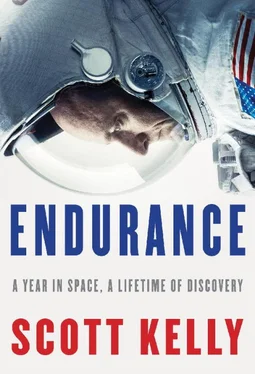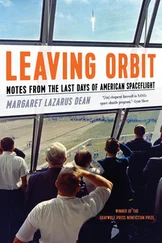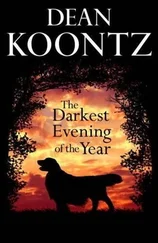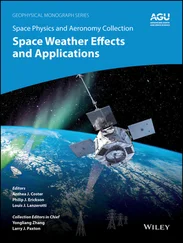There wasn’t much for the commander and pilot to do at this stage other than monitor the systems to make sure everything was going as it should and be prepared to respond if it didn’t. People sometimes mistakenly imagined that we were “flying” the shuttle, that our hands were on the controls and that we could move Discovery around in the sky if we wanted to, like an airplane. In fact, as long as those solid rocket boosters were burning, we were all essentially just along for the ride. The boosters can’t be throttled or shut down.
Once the solid rockets dropped off, two minutes after we left the launchpad, we were flying on the power of the three main engines, so there was more we could do to control our fates. We continued to monitor all the systems closely as we traveled higher and faster. For the first two minutes, we were prepared for the possibility that if something went seriously wrong—most likely a main engine failure—we could turn around and land at the runway at the Kennedy Space Center. We called this abort mode “return to launch site,” and it required the shuttle to fly Mach seven backwards. No one had ever tried this and no one wanted to. (John Young, when he was preparing to command the first shuttle launch, said he hoped never to attempt an RTLS because it “requires continuous miracles interspersed with acts of God.”) So we were all happy when we got to the point known as “negative return,” when RTLS was no longer a possibility and we had other, less risky abort options.
As the shuttle burned through its propellants, it got lighter, increasing its acceleration. When the acceleration got to 3 g’s, it became difficult to breathe, the parachute and oxygen bottles I wore on my back in case of emergency pulling on the straps on my chest. The engines throttled back to keep from exceeding the structural integrity of the spacecraft.
As we accelerated, Curt and I, with Billy Bob’s assistance, monitored the performance of all the systems on our three cathode ray tube displays, keeping abreast of the procedures so we could be ready at a split-second’s notice if we needed to perform one of the actions available to us.
When the shuttle reached its intended orbit, the main engines cut off—MECO—then the now-nearly-empty external tank separated to burn up in the atmosphere. MECO was a great moment because it meant we’d survived the launch phase, one of the riskiest of our entire mission. We had accelerated from zero to 17,500 miles per hour in just eight and a half minutes. Now we were floating in space. I looked out the window.
I tapped Curt on the shoulder and pointed outside. “Hey, what the hell is that?” I asked him. (I was about to use even stronger language, but I didn’t know whether we were still being recorded.)
“That’s the sunrise,” said Curt.
An orbital sunrise, my first. I had no idea how many more of these I was going to see. I’ve now seen thousands, and their beauty has never waned.
I had been so focused on what we were doing I hadn’t bothered looking out the window until now. Even if I had, we had launched in the dark, and up here it was still dark; the sun was behind the Earth. As we crossed over Europe, I saw a blue-and-orange line out the window that spanned the horizon as it grew larger. It looked to me like brilliantly colored paint brushed across a mirror right in front of my eyes, and I knew right then and there that Earth would be the most beautiful thing I would ever see.
I unstrapped myself from my seat and floated headfirst through the passageway to the mid-deck, savoring the alien sensation of weightlessness. When I got there, I found two guys with their heads in puke bags. They were experienced astronauts, but some people have to reacclimate to space every time they go. I’m very lucky that I don’t suffer from the debilitating nausea and vertigo that some people do.
On our second full day in space, we reached the Hubble Space Telescope. It’s in a much higher orbit than most satellites we might rendezvous with—150 miles higher than the space station. Hubble’s orbit is so high, in fact, that missions to rendezvous with it are riskier than flights to a lower orbit.
For many stages of the flight, Curt was in charge of the shuttle controls as commander, and I was there as his backup. But during the rendezvous with Hubble, at a certain point he moved to the back of the shuttle to start monitoring our approach from the aft piloting station and to prepare himself for the manual flying phase. He was to eyeball the closing distance and communicate with me about how we were doing, while I was to make sure we proceeded through the checklist and executed the remaining rendezvous burns properly.
The two spacewalking teams and the robotic arm operator (Billy Bob) moved into high gear once we were safely in orbit. I helped them out when needed and took pictures of Hubble for study on the ground later. Billy Bob was always excited about what we were doing, always enthusiastic, and always had time to help me out or to just take the time to enjoy space. Not everyone who gets the chance to go to space does. He acted as a mentor to me on the mission and taught me all the little details about how to live and work in space that they can’t really teach you on the ground, like moving around in zero g, organizing your workspace when everything floats, and of course fun things like peeing while upside down—lessons I would pass on to others as I became more experienced.
Billy Bob was also not above pranking me. I was still the rookie, after all. When I went into my clothing locker to get changed, I discovered that I had only one pair of underwear for the entire mission. Billy Bob had hidden the rest. I think he expected me to panic, but the joke was on him; I didn’t really care. He eventually told me about his prank. In retrospect, wearing the same underwear for days was good training for my year in space.
Once we got to orbit, I had to adjust to living in such small quarters with six other people. There were two “floors” in the shuttle, the flight deck and the mid-deck, and each of them was smaller than the interior space of a minivan. We worked, ate, and slept on top of one another. At least our eight-day mission would be one of the shorter ones; the longest space shuttle mission was seventeen days.
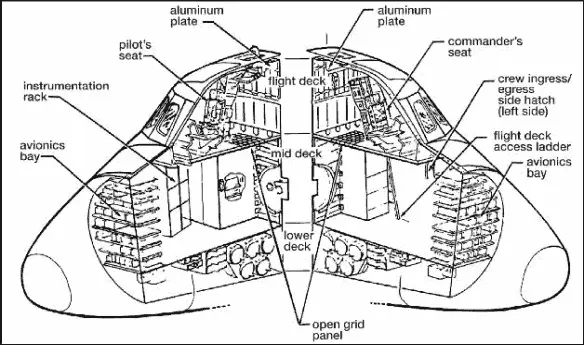
Rendering of the space shuttle cockpit. Credit 7 ILLUSTRATION CREDITS Nathan Koga 1, 2, 5, 6, 7, and 8: NASA; 3 and 4: NASA/Scott Kelly Illustrations NASA 9 and 10; Scott Kelly 11 and 12, U.S. Navy 13; NASA 14; NASA 15 and 16; NASA 17 and 18; NASA 19 and 20; NASA 21 and 22; Scott Kelly 23, Stephanie Stoll/NASA 24, NASA 25; NASA/Bill Ingalls 26, NASA 27; NASA 28, NASA/Bill Ingalls 29; NASA/Bill Ingalls 30, NASA 31; NASA 32, NASA/Bill Ingalls 33; NASA/Bill Ingalls 34 and 35; NASA/Bill Ingalls 36, NASA 37; NASA 38 and 39; Scott Kelly/NASA 40, NASA 41; NASA 42, NASA/Scott Kelly 43; NASA 44, NASA/Scott Kelly 45; NASA/Scott Kelly 46, NASA 47; NASA/Scott Kelly 48 and 49; NASA/Scott Kelly 50 and 51; NASA/Bill Ingalls 52 and 53; NASA/Bill Ingalls 54; NASA 55
—
ONE THING that surprised me about living in space was that it was hard to focus. There were many activities I had done over and over in the simulator, but when I got to space I found it much harder to concentrate on what I was doing. At one level I think it was just the experience of being in space for the first time—who could concentrate on a checklist of a procedure while floating with the beautiful Earth turning just outside the window? At another level, doing basic tasks was much more challenging in weightlessness, and I learned there was no way to compensate for that except to plan for the fact that everything was just going to take a bit more time.
Читать дальше
